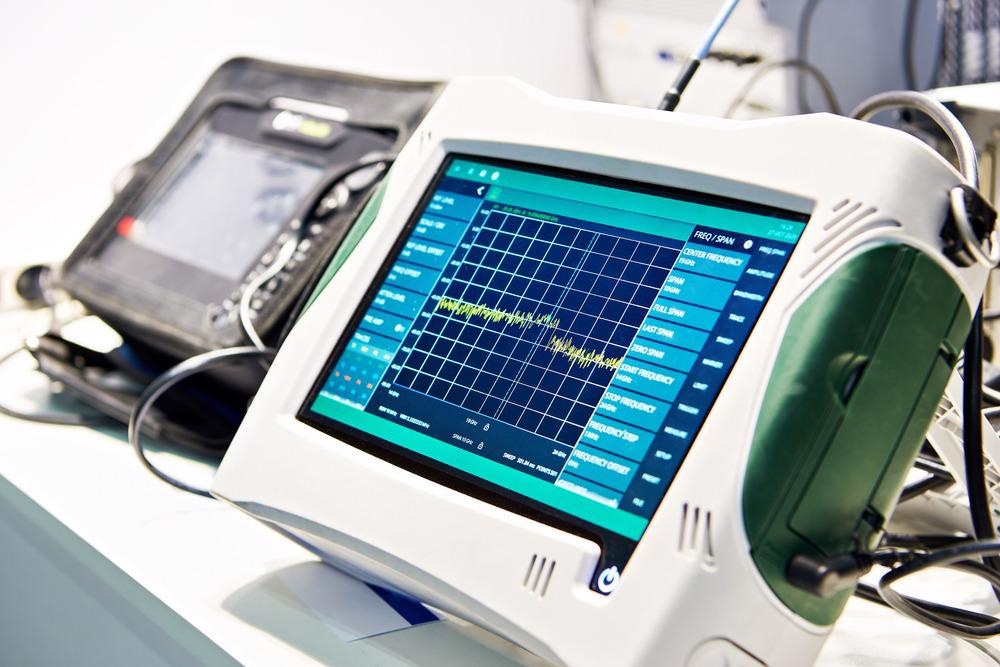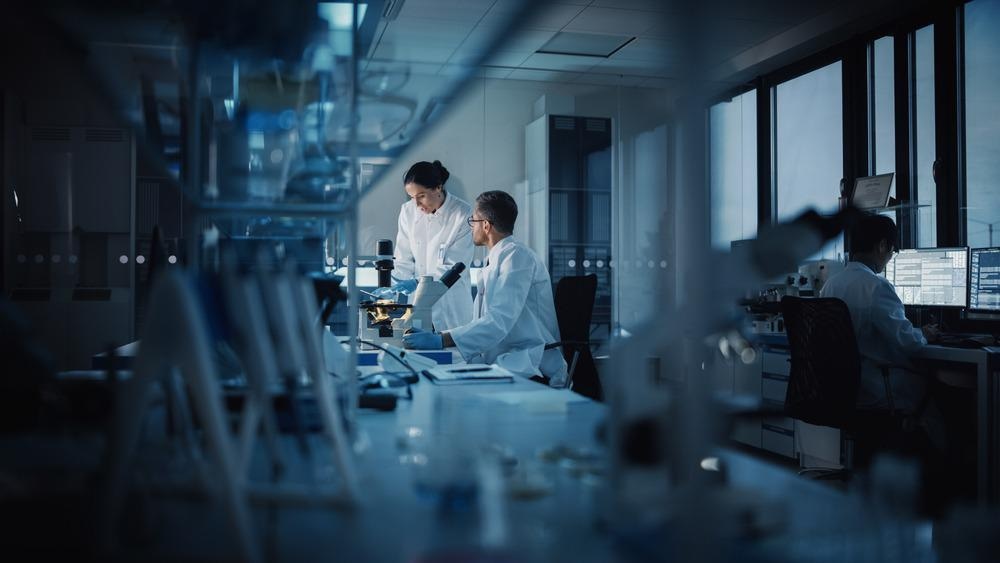In a recent study published in the Journal of Electron Spectroscopy and Related Phenomena, researchers installed a high-efficiency microchannel plate detector (MCP) in a magnetic bottle electron spectrometer, which improved the detection efficiency and aided precise measurements. The study confirmed that using a funnel MCP detector in a magnetic bottle electron spectrometer enables more efficient multi-electron ion coincidence measurements.

Image Credit: Sergey Ryzhov/Shutterstock.com
Multi-Electron Coincidence Spectrometry
Multi-electron coincidence spectrometry is used to measure the energy by which the electrons are chemically bonded in an atom or molecule. The chemical bond energy is calculated by bombarding the X-ray or ultraviolet radiations and further measuring the resultant kinetic energy.
For industry and researchers, spectrometry helps to study the multi-electron emission pathways and chemical mechanisms in atoms and molecules. The method is also used to analyze advanced material behavior in nuclear and space physics.
Several studies have demonstrated that the interaction of an atom with a soft X-ray photon often leads to the emission of multiple electrons and the formation of a multiply charged ion, which can also be effectively measured using multi-electron coincidence spectroscopy. Additionally, it can also aid in obtaining data on the energy correlations between the emitted electrons, which is important to study the chemical behavior.
Magnetic Bottle Electron Spectrometer
One of the novel methods to improve the multi-electron coincidence spectroscopy is to use the magnetic bottle electron spectrometer. Magnetic bottle electron spectrometers are classified as double core photoionization and core-valence triple photoionization.
The magnetic bottle electron spectrometer utilizes an inhomogeneous magnetic field to capture electrons over the 4π-steradian solid angle and parallelize their trajectories in a short distance. Further, a uniform magnetic field guides electrons to a detector, which is placed at a smaller distance.
In this study, an MCP detector with a large open area ratio was installed in a magnetic bottle electron spectrometer to improve the coincidence efficiency.
Experimental Set-Up
Researchers carried out the experiments at the bending-magnet beamline synchrotron facility, during which the electron storage ring was operated in the single-bunch and top-up injection mode. A strong permanent magnet with a conical top and a 1.5-m-long solenoid coil was used to produce an inhomogeneous magnetic field to collect electrons emitted over the entire 4π solid angle.
Sample gases were supplied to the focal point through a copper needle placed beside the magnet. The large open area ratio was achieved by the funnel-shaped entrance of each pore on the MCP front. Finally, the collected electrons were guided by the uniform magnetic field through a 1.5-m flight path using an MCP detector of 90% open area ratio and 40-mm active diameter.
It must be noted that the high voltage pulses applied to the repeller and extractor for ion extraction had elevations of 2 and 1.8 kV, respectively. Furthermore, the flight time for the first electrons was short for product-ions to drift out before the extraction pulse was applied during the experiment.

Image Credit: Gorodenkoff/Shutterstock.com
Results
The overall detection efficiency of the magnetic bottle electron spectrometer for electrons and ions was substantially improved by introducing a funnel MCP detector. The researchers demonstrated the improvement by plotting a graph between the charge of Xeon ion and the detection efficiency. It can be observed in the chart that as the charge improves, the detection efficiency improves. The overall detection efficiency of the magnetic bottle spectrometer was determined to be approximately 70% for electrons with kinetic energies of up to at least 530 electron-volt (eV) and about 85% for Xeon ions.
The improved detection efficiency in multi-electron ion coincidence spectroscopy was also demonstrated by improvement in the six-fold coincidence measurement. The rate of six-fold coincidence was more than seven times higher than the standard MCP detector.
Other Studies
In a recent study published in the journal Review of Scientific Instruments, researchers developed a projection-type electron spectroscopy collimator analyzer to study the charged particles. The main advantage of the instrument was that it was compact in size and had a wider acceptance cone angle. Furthermore, the device could be used effectively for the two-dimensional angular distribution measurements of electrons.
In another study published in the journal Measurement Science and Technology, researchers developed an instrument that could measure the absolute detection efficiency of electrons in the range of 30–900 eV. The main advantage of the device was that it had enhanced resolution and MCP absolute efficiency.
In some other studies, coincidence measurements during the multi-electron coincidence spectroscopy of up to four electrons were achieved, while others demonstrated the measurement of up to five electrons. Additionally, some other research works showed that the power of multi-electron coincidence spectroscopy could be enhanced using the product-ions during the analysis.
References and Further Reading
Fumihiko Matsui and Hiroyuki Matsuda, "Projection-type electron spectroscopy collimator analyzer for charged particles and x-ray detections," Review of Scientific Instruments 92, 073301 (2021) https://aip.scitation.org/doi/10.1063/5.0051114
Apponi, A., Pandolfi, F., Rago, I., Cavoto, G., Mariani, C. and Ruocco, A., 2021. Absolute efficiency of a two-stage microchannel plate for electrons in the 30–900 eV energy range. Measurement Science and Technology, 33(2), p.025102. https://iopscience.iop.org/article/10.1088/1361-6501/ac3d07
Yasumasa Hikosaka, Multi-electron–ion coincidence spectrometer with a high-efficiency microchannel plate detector, Journal of Electron Spectroscopy and Related Phenomena, Volume 255, 2022, 147158, ISSN 0368-2048, https://www.sciencedirect.com/science/article/pii/S0368204822000020?via%3Dihub
Disclaimer: The views expressed here are those of the author expressed in their private capacity and do not necessarily represent the views of AZoM.com Limited T/A AZoNetwork the owner and operator of this website. This disclaimer forms part of the Terms and conditions of use of this website.